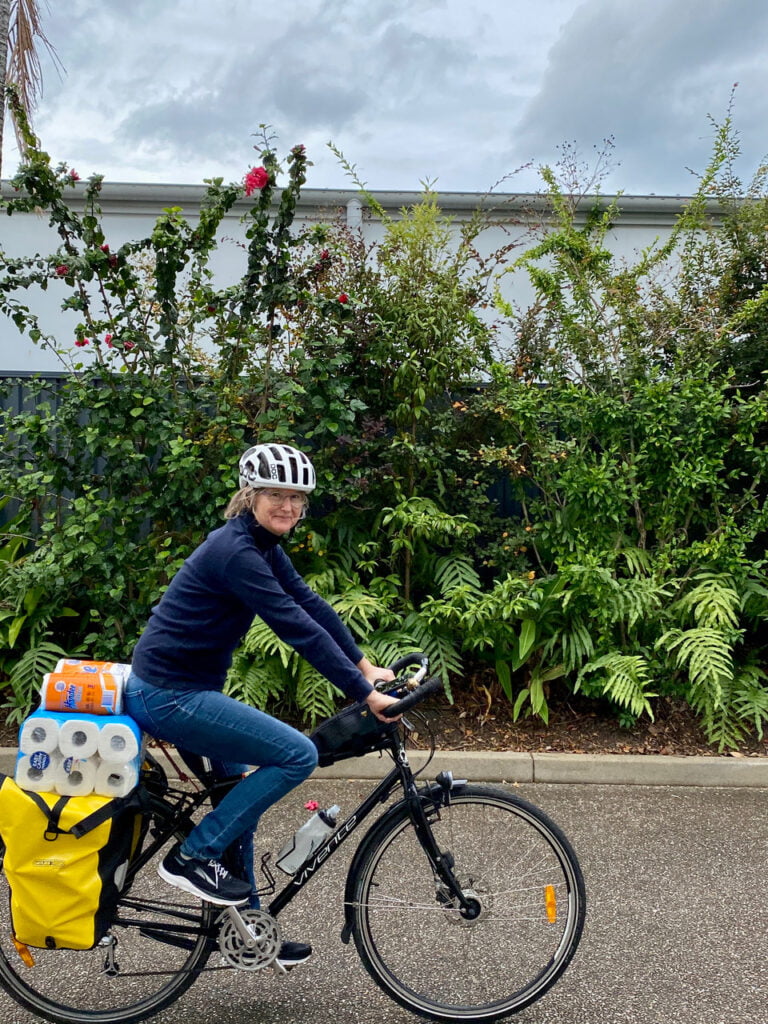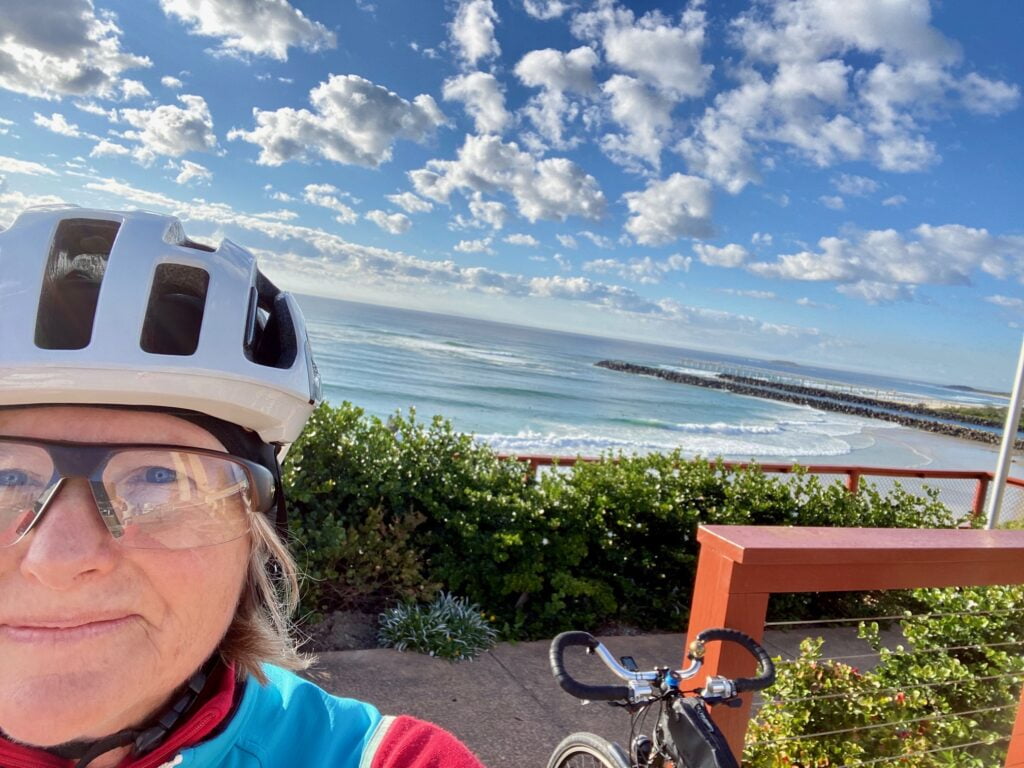BQ Tests: Ground Effect Baked Alaska
If you’ve ever turned up to a group ride, trailhead or bike tour and spotted a few riders already kitted out in Ground Effe...
I pedal, I balance, I respond. My legs propel me forward, and my muscles work to keep me upright. My reflexes answer when I need to change direction. Whether I’m riding fast or slow, I’m moving and riding to my wellness. My body is in motion. My brain is alive. All of me is active and moving under my own power. Even on my electric bike, I have to pedal to activate the motor. I’m still pedalling and moving under my own steam. As it turns out, my human-powered motion is more powerful than I thought.
As our lifestyles have become more automated with technology and designed around cars, we live in an environment that isn’t designed for human motion. Becoming inactive happens easily. Yet human bodies need to move. Movement has been described as ‘the miracle pill’: if packaged as a drug, movement would be the most valuable medicine ever created. You can read the science around that idea in Peter Walker’s book “The Miracle Pill” (1). Here, I want to tell you how my experience tells me it’s true.
In late 2014, I decided to experiment with how much I could use my bike in everyday life. Eleven months later, I looked at what had changed. Although there’s nothing scientific about my example, the reality of how my well-being changed was a wonderful surprise. By choosing to ride my bicycle for transport, my bike riding became ‘incidental activity’. Incidental activity is the type that happens as we go about our everyday life. For example, walking around the shops, cleaning, gardening, using stairs instead of an elevator or escalator are great examples of incidental activity. In my case, riding my bicycle for transport became my incidental activity.

Riding uphill became easier. My legs are more toned, feel stronger and I can carry larger loads in my panniers. My mind becomes clearer after a bike ride. I sleep better. I have more energy and feel more physically capable.
There were drawbacks too. As my riding increased, I noticed my shoulders and knees rebelling as different muscles tightened. As a solution, I asked my bike shop to adjust my saddle and handlebars to ensure a good riding position. Some treatment and advice from my physio remedied my muscles, and I keep on top of that with regular yoga poses for stretching.
I also aim to stop before my body makes me stop – before the choice is taken away from me. In my case, I like to leave some fuel in my tank. Because if I try to ride on empty that will take me away from wellness, instead of towards it. Rest is the yin to my bicycle yang.
Related blogpost: Unconventional reasons to ride bikes
I don’t have to ‘make time’ for exercising anymore. It’s ingrained in my everyday routine. The World Health Organisation (WHO) recommends at least 150-300 minutes of moderate-intensity aerobic physical activity each week for adults aged 18 to 64 years (2)? In a typical week, I make six bicycle journeys, totalling about seventy kilometres. Some journeys are as short as 1.4 kilometres, and others are as far as twenty kilometres. Each week, these journeys bring me about five hours of incidental exercise. Riding my bicycle for transport allows me to achieve the level of physical activity recommended by WHO.
My human-powered bicycle motion brings good things to my life, every day. Imagine the powerful change for our communities and well-being if everyone used a bicycle for destinations within five kilometres of home.

Gail Rehbein is a bicycle-riding writer who loves to share stories, information and inspiration about life seen from two wheels on Australia’s Gold Coast and beyond. You can find her work and make contact on her website A Bike for All Seasons.
References:
(1) Walker, P. (2021). The Miracle Pill: Why a sedentary world is getting it all wrong. London, UK. Simon & Schuster.
(2) World Health Organisation. (2020). WHO Guidelines on physical activity and sedentary behaviour. Retrieved from: https://apps.who.int/iris/rest/bitstreams/1315866/retrieve
If you’ve ever turned up to a group ride, trailhead or bike tour and spotted a few riders already kitted out in Ground Effe...
Matt Nauthe is a bike rider based in Brisbane, who joined Bicycle Queensland quite recently in 2024 – but riding bikes is n...
It has been said that the best gravel bike is whatever bike you own now. And in the same vein, the best way to start bikepack...
In a custom fit-out studio in Brisbane’s West End, riders of all types are finding their sweet spot - on the saddle. This i...